
Dr. No is the sixth novel by the English author Ian Fleming to feature his British Secret Service agent James Bond. Fleming wrote the novel in early 1957 at his Goldeneye estate in Jamaica. It was first published in the United Kingdom by Jonathan Cape on 31 March 1958. The novel centres on Bond's investigation into the disappearance in Jamaica of two fellow MI6 operatives. He establishes that they had been investigating Doctor No, a Chinese operator of a guano mine on the fictional Caribbean island of Crab Key. Bond travels to the island and meets Honeychile Rider and later Doctor No.

Ian Lancaster Fleming was a British writer, best known for his post-war James Bond series of spy novels. Fleming came from a wealthy family connected to the merchant bank Robert Fleming & Co., and his father was the Member of Parliament (MP) for Henley from 1910 until his death on the Western Front in 1917. Educated at Eton, Sandhurst, and, briefly, the universities of Munich and Geneva, Fleming moved through several jobs before he started writing.
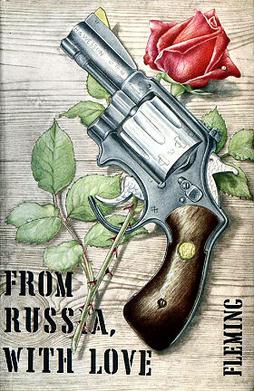
From Russia, with Love is the fifth novel by the English author Ian Fleming to feature his fictional British Secret Service agent James Bond. Fleming wrote the story in early 1956 at his Goldeneye estate in Jamaica; at the time he thought it might be his final Bond book. The novel was first published in the United Kingdom by Jonathan Cape on 8 April 1957.
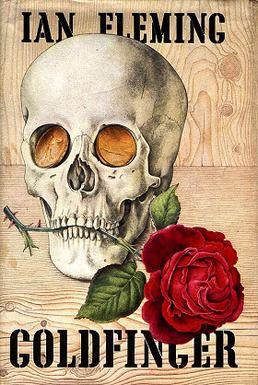
Goldfinger is the seventh novel in Ian Fleming's James Bond series. Written in January and February 1958, it was first published in the UK by Jonathan Cape on 23 March 1959. The story centres on the investigation by the British Secret Service operative James Bond into the gold-smuggling activities of Auric Goldfinger, who is also suspected by MI6 of being connected to SMERSH, the Soviet counter-intelligence organisation. As well as establishing the background to the smuggling operation, Bond uncovers a much larger plot: Goldfinger plans to steal the gold reserves of the United States from Fort Knox.

Moonraker is the third novel by the British author Ian Fleming to feature his fictional British Secret Service agent James Bond. It was published by Jonathan Cape on 5 April 1955 and featured a cover design conceived by Fleming. The plot is derived from a Fleming screenplay that was too short for a full novel, so he added the passage of the bridge game between Bond and the industrialist Hugo Drax. In the latter half of the novel, Bond is seconded to Drax's staff as the businessman builds the Moonraker, a prototype missile designed to defend England. Unknown to Bond, Drax is German, an ex-Nazi now working for the Soviets; his plan is to build the rocket, arm it with a nuclear warhead, and fire it at London. Uniquely for a Bond novel, Moonraker is set entirely in Britain, which raised comments from some readers, complaining about the lack of exotic locations.
M is a codename held by a fictional character in Ian Fleming's James Bond book and film series; the character is the Chief of the Secret Intelligence Service for the agency known as MI6. Fleming based the character on a number of people he knew who commanded sections of British intelligence. M has appeared in the novels by Fleming and seven continuation authors, as well as appearing in twenty-four films. In the Eon Productions series of films, M has been portrayed by four actors: Bernard Lee, Robert Brown, Judi Dench and Ralph Fiennes, the incumbent; in the two independent productions, M was played by John Huston, David Niven and Edward Fox.

Thunderball is the ninth book in Ian Fleming's James Bond series, and the eighth full-length Bond novel. It was first published in the UK by Jonathan Cape on 27 March 1961, where the initial print run of 50,938 copies quickly sold out. The first novelisation of an unfilmed James Bond screenplay, it was born from a collaboration by five people: Ian Fleming, Kevin McClory, Jack Whittingham, Ivar Bryce and Ernest Cuneo, although the controversial shared credit of Fleming, McClory and Whittingham was the result of a courtroom decision.
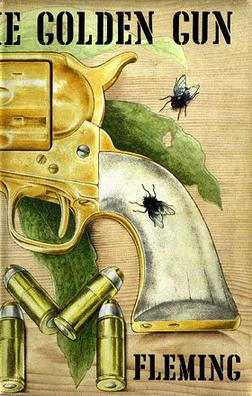
The Man with the Golden Gun is the twelfth and final novel in Ian Fleming's James Bond series and thirteenth Bond book overall. It was first published by Jonathan Cape in the UK on 1 April 1965, eight months after the author's death. The novel was not as detailed or polished as the others in the series, leading to poor but polite reviews. Despite that, the book was a best-seller.

On Her Majesty's Secret Service is the tenth novel and eleventh book in Ian Fleming's James Bond series. It was first published in the United Kingdom by Jonathan Cape on 1 April 1963. Fleming changed the formula and structure from the previous novel, The Spy Who Loved Me, and made a determined effort to produce a work that adhered to his tried and tested format. The initial and secondary print runs sold out quickly, with over 60,000 copies sold in the first month, double that of the previous book's first month of sales. Fleming wrote the novel at Goldeneye, his holiday home in Jamaica, while Dr. No, the first entry in the James Bond film series by Eon Productions, was being filmed nearby.

The Spy Who Loved Me is the ninth novel and tenth book in Ian Fleming's James Bond series, first published by Jonathan Cape on 16 April 1962. It is the shortest and most sexually explicit of Fleming's novels, as well as the only Bond novel told in the first person. Its narrator is a young Canadian woman, Viv Michel. Bond himself does not appear until two-thirds of the way through the book, arriving at precisely the right moment to save Viv from being raped and murdered by two criminals. Fleming wrote a prologue to the novel giving the character Viv credit as a co-author.
Robert Markham is a pseudonym used by author Kingsley Amis to publish Colonel Sun in March 1968. The book was the first continuation James Bond novel following the death of Bond's creator, Ian Fleming.

Octopussy and The Living Daylights is the fourteenth and final James Bond book written by Ian Fleming in the Bond series. The book is a collection of short stories published posthumously in the United Kingdom by Jonathan Cape on 23 June 1966.
Ian Fleming Publications is the production company formerly known as both Glidrose Productions Limited and Glidrose Publications Limited, named after its founders John Gliddon and Norman Rose. In 1952, author Ian Fleming bought it after completing his first James Bond novel, Casino Royale; he assigned most of his rights in Casino Royale, and the works which followed it to Glidrose.

Colonel Sun is a novel by Kingsley Amis published by Jonathan Cape on 28 March 1968 under the pseudonym "Robert Markham". Colonel Sun is the first James Bond continuation novel published after Ian Fleming's 1964 death. Before writing the novel, Amis wrote two other Bond related works, the literary study The James Bond Dossier and the humorous The Book of Bond. Colonel Sun centres on the fictional British Secret Service operative James Bond and his mission to track down the kidnappers of M, his superior at the Secret Service. During the mission he discovers a communist Chinese plot to cause an international incident. Bond, assisted by a Greek spy working for the Russians, finds M on a small Aegean island, rescues him and kills the two main plotters: Colonel Sun Liang-tan and a former Nazi commander, Von Richter.
Per Fine Ounce is the title of an unpublished novel by Geoffrey Jenkins featuring Ian Fleming's James Bond. It was completed c.1966 and is considered a "lost" novel by fans of James Bond because it was actually commissioned by Glidrose Productions, the official publishers of James Bond. It was rejected for publication, however, missing the opportunity to become the first continuation James Bond novel. The Adventures of James Bond Junior 003½, a novel written by the pseudonymous R. D. Mascott, was later published in 1967 featuring James Bond's nephew; Colonel Sun written by Kingsley Amis under the pseudonym Robert Markham was published in 1968 as the first adult continuation novel following Ian Fleming's The Man with the Golden Gun (1965).

Casino Royale is the first novel by the British author Ian Fleming. Published in 1953, it is the first James Bond book, and it paved the way for a further eleven novels and two short story collections by Fleming, followed by numerous continuation Bond novels by other authors.
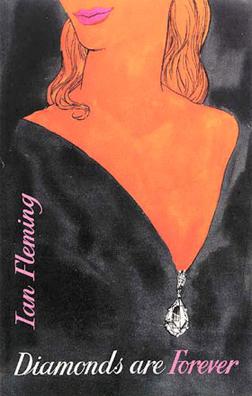
Diamonds Are Forever is the fourth novel by the British author Ian Fleming to feature his fictional British Secret Service agent James Bond. Fleming wrote the story at his Goldeneye estate in Jamaica, inspired by a Sunday Times article on diamond smuggling. The book was first published by Jonathan Cape in the United Kingdom on 26 March 1956.

Live and Let Die is the second novel in Ian Fleming's James Bond series of stories. Set in London, the United States and Jamaica, it was first published in the UK by Jonathan Cape on 5 April 1954. Fleming wrote the novel at his Goldeneye estate in Jamaica before his first book, Casino Royale, was published; much of the background came from Fleming's travel in the US and knowledge of Jamaica.
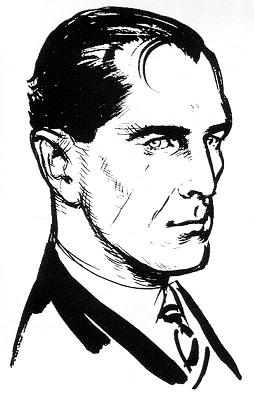
Commander James Bond is a character created by the British journalist and novelist Ian Fleming in 1953. He is the protagonist of the James Bond series of novels, films, comics and video games. Fleming wrote twelve Bond novels and two short story collections. His final two books—The Man with the Golden Gun (1965) and Octopussy and The Living Daylights (1966)—were published posthumously.















